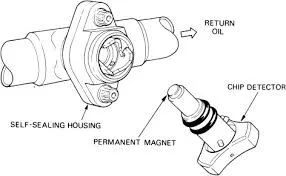Jul . 28, 2024 09:14 Back to list
Innovative Designs and Applications of Rotating Hydraulic Cylinders in Chinese Industry
The Advancements and Applications of China's Rotating Hydraulic Cylinder Technology
Hydraulic cylinders are integral components in many industrial applications, providing the necessary force and motion to facilitate a wide range of tasks. Among the various innovations in hydraulic technology, the rotating hydraulic cylinder has gained considerable attention in recent years, especially in China, where rapid industrialization has spurred advancements in engineering practices.
What is a Rotating Hydraulic Cylinder?
A rotating hydraulic cylinder is a specialized type of hydraulic actuator that allows for rotational movement in addition to linear movement. This dual functionality is achieved through a combination of hydraulic pressure and mechanical design, enabling it to perform complex tasks with precision and efficiency. The primary components include a hydraulic chamber, a rotating rod, and seals that prevent fluid leakage, ensuring the system works effectively under high pressure.
Applications in Industry
The applications of rotating hydraulic cylinders are diverse, spanning several sectors, including construction, manufacturing, and automotive engineering. In construction, these cylinders are commonly used in heavy machinery such as excavators, cranes, and drilling rigs, where rotating motions are crucial for tasks like digging, lifting, and positioning heavy loads. Their ability to deliver high torque and precise control over rotational speed makes them invaluable in these settings.
In manufacturing, rotating hydraulic cylinders facilitate processes that require accurate positioning and repetitive motions. Industrial robots and automated systems utilize these cylinders to perform tasks such as material handling, assembly, and packaging. Their efficiency helps reduce production times and improve overall operational productivity.
The automotive industry also benefits from this technology, particularly in assembling and testing vehicles. Rotating hydraulic cylinders are used in robotic systems that need to move components into precise orientations, ensuring high-quality assembly processes. Additionally, they are utilized in testing rigs where components must be rotated to evaluate their performance under various operational conditions.
china rotating hydraulic cylinder

Innovations and Technological Advancements
China has emerged as a leader in developing rotating hydraulic cylinder technology, primarily driven by the nation's ambitious infrastructure projects and the need for more efficient manufacturing solutions. Innovations in materials science and engineering design have led to the creation of stronger, lighter, and more efficient cylinders. For example, advancements in composite materials have reduced the weight of cylinders while maintaining their strength and reliability.
Moreover, the integration of smart technologies, such as sensors and IoT (Internet of Things) capabilities, has further enhanced the functionality of hydraulic systems. By implementing real-time monitoring and control systems, operators can optimize performance, reduce energy consumption, and anticipate maintenance needs, thus prolonging the life of the machinery.
Environmental Considerations and Future Developments
As the world becomes increasingly aware of environmental sustainability, there is a growing emphasis on developing eco-friendly hydraulic systems. China's rotating hydraulic cylinder technology is no exception, with ongoing research focused on creating biodegradable hydraulic fluids and minimizing energy consumption. These efforts align with global trends toward sustainable industrial practices and the pursuit of reducing carbon footprints.
Looking ahead, the future of rotating hydraulic cylinder technology in China appears promising. With continuous investments in research and development, coupled with a robust manufacturing base, China is likely to spearhead innovations that could reshape the industry. The potential expansion into newer markets, such as renewable energy and robotics, presents exciting opportunities for growth.
Conclusion
In summary, China's advancements in rotating hydraulic cylinder technology reflect its commitment to enhancing industrial efficiency and innovation. As these systems become more sophisticated, their applications will continue to expand, offering solutions that not only improve productivity but also align with sustainable practices. The journey of this technology is far from over, and it holds the promise of transforming industries across the globe.
-
Fork Lift Power Units - Hebei Shenghan | Efficiency, Reliability
NewsJul.13,2025
-
1.5-Ton Turbocharged Cylinder-Hebei Shenghan|Hydraulic Solution,Energy Efficiency
NewsJul.13,2025
-
Auto Hoist Power Units-Hebei Shenghan|Efficiency&Industrial Lifting
NewsJul.13,2025
-
Double Acting Power Units-Hebei Shenghan|Hydraulic Solutions,Industrial Efficiency
NewsJul.13,2025
-
1.5 Ton Lifting Cylinder 70/82-40-290-535 - High-Performance Hydraulic Solution | Hebei Shenghan
NewsJul.13,2025
-
Fork Lift Power Units - Hebei Shenghan | Efficiency&Reliability
NewsJul.13,2025
